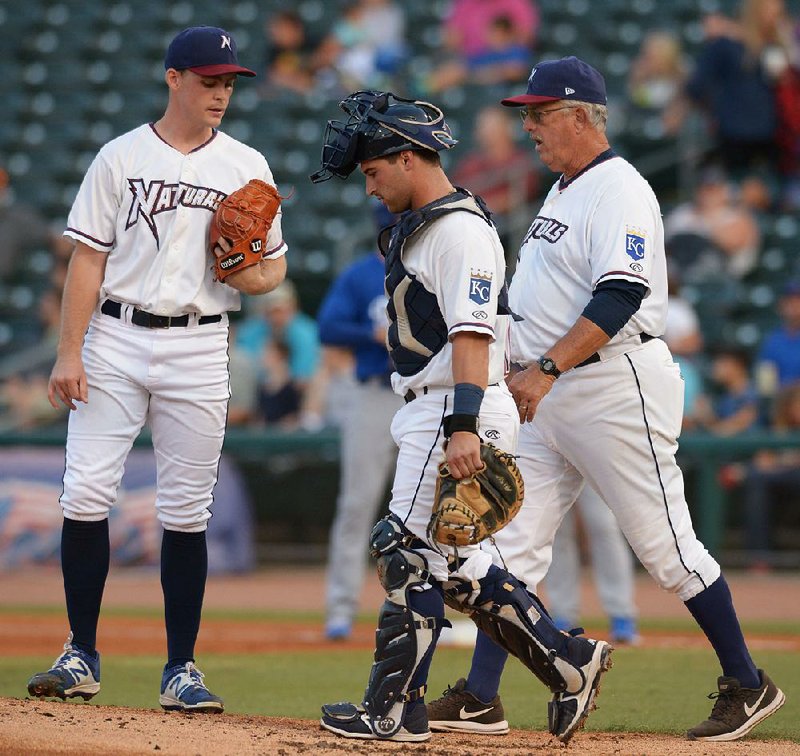Starting this season, all Minor League Baseball clubs will start extra innings with a runner at second base.
The new rule was part of a group of changes, announced by MiLB on Wednesday that are intended to improve the pace of play and address player safety concerns.
Minor league pace of play rule changes
All levels of Minor League Baseball will begin extra innings with a runner at second base, which will be the player in the batting order position previous to the leadoff batter of the inning (or a substitute for that player).
Class AAA clubs will be permitted six mound visits per team, Class AA clubs will be allowed eight per team, Class A clubs will be allowed 10 per team, and there will be no limit on mound visits for Short Season and Rookie-level clubs.
Class AAA and Class AA levels will use a 15-second pitch clock with no runners on base. The pitcher does not necessarily have to release the ball within 15 seconds, but must begin his wind-up or begin the motion to come to the set position to comply with the 15-second rule with no runners on base. The timer starts when the pitcher has possession of the ball in the dirt circle surrounding the pitcher’s rubber, the catcher is in the catcher’s box and the batter is in the dirt circle surrounding home plate.
There also will be a 15-second pitch clock with no runners on base in the Class AAA and Class AA levels, and Class AAA clubs will be limited to six mound visits per team; Class AA clubs will get eight; Class A clubs, 10.
"We believe these changes to extra innings will enhance the fans' enjoyment of the game and will become something that the fans will look forward to on nights where the game is tied late in the contest," Minor League Baseball President Pat O'Conner said in a statement. "Player safety has been an area of growing concern for our partners at the Major League Baseball level, and the impact that lengthy extra innings games has on pitchers, position players and an entire organization was something that needed to be addressed."
The changes will begin when the Class AA Arkansas Travelers and Northwest Arkansas Naturals start their seasons April 5.
"I understand the minor leagues are your training ground, so I don't necessarily mind all that much for the games here, tweak it, see how it goes," said Paul Allen, the general manager of the Travelers. "I know there's going to be some hardcore baseball fans that are real traditionalists who are totally against it. But to me, it's something they can at least play with and see what happens."
Pace of play in baseball has been addressed in the minor league rulebooks before to combat lengthy games. No rule has yet been implemented at the major league level, although the average time of a nine-inning game in the majors was a record 3 hours, 5 minutes last season -- up from 2 hours, 46 minutes in 2005.
MLB announced in 2015 that Class AAA and Class AA clubs would use a 20-second pitch clock in between pitches. The average time of a nine-inning game in the minor leagues dropped from 2 hours, 49 minutes in 2014 to 2 hours, 43 minutes in 2015.
It rose to 2 hours, 45 minutes in 2016, and the average time was 2 hours, 29 minutes last year.
"That was something weird," Allen said. "'What's that clock? It's a timeless game -- there's no clock.' There was a small adjustment period, but everyone got used to it."
The Class A Florida State League experimented with a 15-second pitch clock in the last two seasons, and its average time for a nine-inning game dropped from 2 hours, 41 minutes in 2015 to 2 hours, 35 minutes the in 2016. It then rose to 2 hours, 38 minutes last year.
The league plans on continuing to use the 15-second clock, although the rule only applies to Class AAA and AA.
People are already used to the pitch clock, Allen said, it's the extra inning runner that will have an adjustment period.
"We'll have to describe it [over the P.A. system or the scoreboard] the first time, actually probably all year long," Allen said. "It'll be one of those things: 'Wait, what happened? How did that guy get to second?'"
While the pace of play rules are just now entering baseball, the same rules have been used in softball for over 20 years.
USA Softball implemented the "International Tiebreaker" in 1994, which set a runner on second base starting in the 10th inning, and Director of Umpires Kevin Ryan said that a 20-second pitch clock was put into place "long before" the tiebreaker rule.
The International Tiebreaker was changed to the eighth inning in 2000. A regulation softball game ends if the game is not tied after the seventh inning.
Ryan said the addition of the extra-inning runner "wasn't something to speed our game up," but that it was "more or less something to keep games on time" during tournaments with multiple games on the same day.
"There were mixed emotions about it," said Ryan, who umpired softball when the rules were first implemented. "You have a pitcher that's throwing a great game. They haven't gotten a runner past first. Then all of the sudden they've got a runner on second?"
More than two decades later, are there still mixed emotions?
"Nope," Ryan said. "It's really kind of funny. It used to be [a big deal]. When the last batter was out, you needed to put this runner on second base. But now, by the time you get the plate dusted off, that runner's on second base. The teams, coaches, umpires get used to it."
Sports on 03/15/2018


